 Overview
Overview
 Koh Ker
Koh Ker, the ancient capital of the Khmer empire, is an exceptional archaeological site that offers a fascinating dive into the history of Cambodia. Its surrounding jungle, a green setting, reveals the magic of this timeless place. Over 81 km², nearly 180 sanctuaries and temples, witnesses of its past grandeur, are unveiled to visitors, with the Prasat Thom, a 30-meter-high pyramidal temple, as the highlight.
Under the reign of Jayavarman IV, Koh Ker saw the birth of sculptures of exceptional beauty, maybe the most impressive from the whole of the Khmer Empire. Many are now displayed in art galleries around the world.
Located about 120 km northeast of Siem Reap, this off-the-beaten-path destination will appeal to travelers seeking adventure, discovery, and sharing.
 Top Attractions
Top Attractions
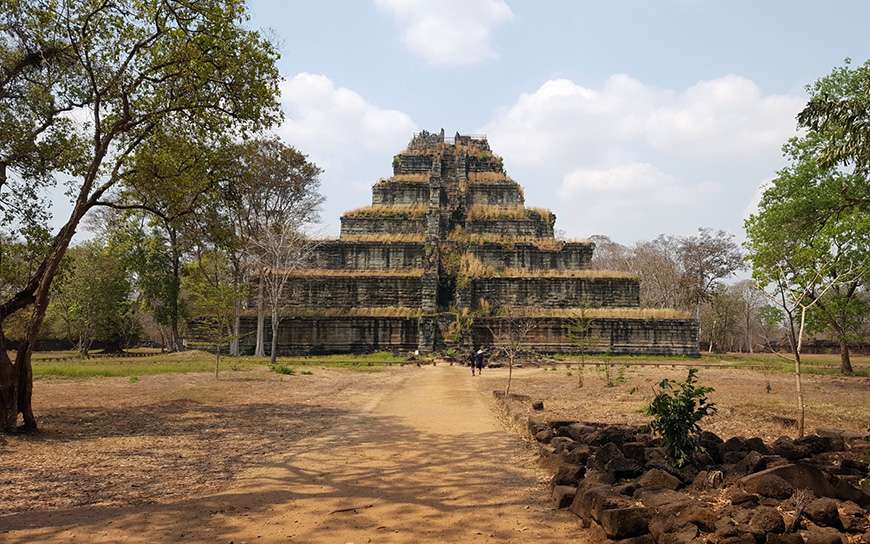 The Prasat Thom, a pyramidal temple, is the emblem of Koh Ker
The Prasat Thom, a pyramidal temple, is the emblem of Koh Ker
Explore the Architectural Wonders of Koh Ker's Must-See Temples
The Prasat Thom
This pyramidal temple, emblem of Koh Ker, is a true architectural masterpiece. Climb to the top of its seven levels to enjoy a breathtaking view of the surrounding region.
The Prasat Krahom
This red sandstone temple, dedicated to Shiva, is renowned for its impressive sculptures and finely carved lintels.
The Prasat Neang Khmau
This temple, also known as the "temple of the black lady," is surrounded by a mysterious and enchanting atmosphere.
The Koh Ker temple group
Explore the other temples on the site, such as the Prasat Pram, the Prasat Bak, and the Prasat Chrap, each with its own history and architectural peculiarities.
 See & Do
See & Do
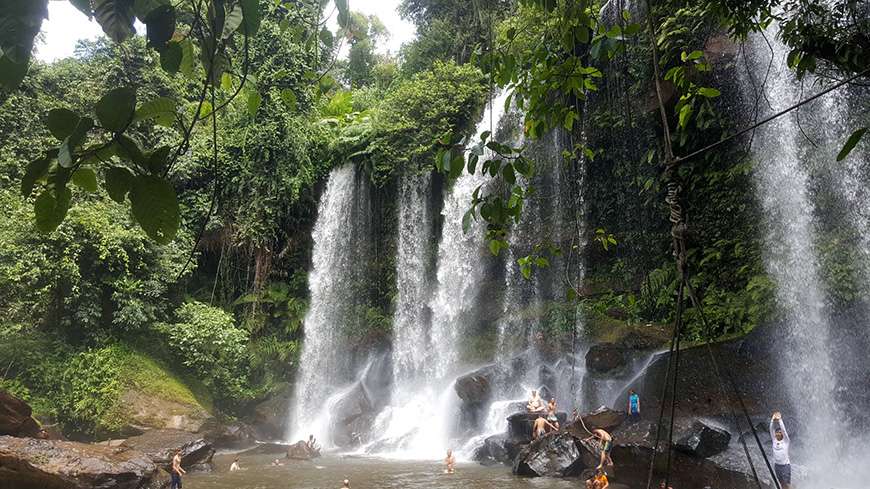 The Kulen Promtep Wildlife Sanctuary is the largest protected area in Cambodia
The Kulen Promtep Wildlife Sanctuary is the largest protected area in Cambodia
Located on the outskirts of the Kulen Prum Tep Nature Reserve, 120 km from Siem Reap and a stone's throw from the Thai border, Koh Ker offers a true immersion into rural Cambodia.
The former capital of the Khmer empire, founded in the 10th century, was once a prosperous city of 10,000 inhabitants. Today, the jungle and ruins intertwine intimately, offering a striking spectacle. It must be said that Koh Ker was abandoned from the 10th century until 2004 when road development and demining allowed this unique place to be rediscovered.
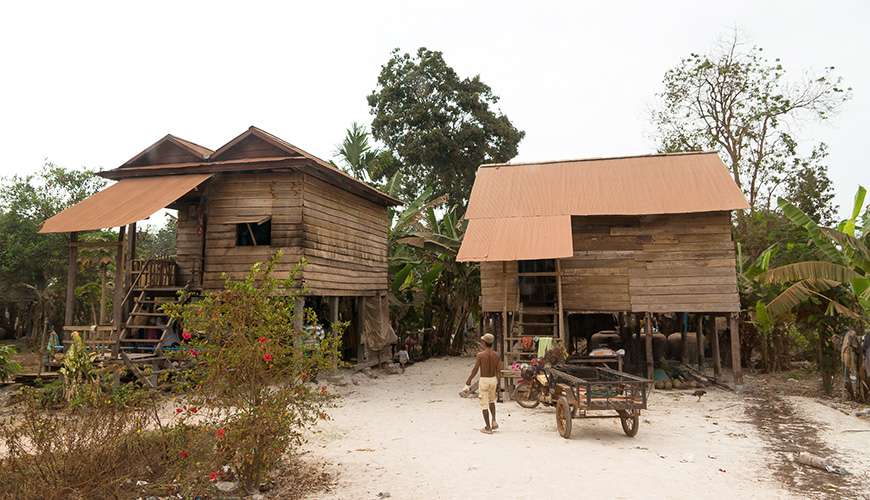 Tmatboey is a forest village of 236 families, some from the minority Kui ethnic group
Tmatboey is a forest village of 236 families, some from the minority Kui ethnic group
For those fortunate enough to have more time, a getaway to the Kulen Promtep Nature Reserve, near Koh Ker, is highly recommended. Wildlife enthusiasts may have the chance to spot the giant ibis, Cambodia's national bird, unfortunately endangered.
The village of Tmat Boey, located in the reserve, also offers an immersion into local cultures. Although accommodation options are limited in this remote region, the experience of a homestay can be unforgettable. Most visitors make the round trip from Siem Reap, located about three hours away. This lively city, with its restaurants, shops, and nightlife, is also the gateway to the famous Angkor temples.
 Go Green
Go Green
Mr Linh's Adventure a travel agency specializing in off-the-beaten-path tours, offers unique experiences in the Koh Ker region:
Jungle trekking and homestay: Experience an authentic adventure by participating in a jungle trek, followed by a night at a local village homestay.
Discovery of hidden temples and lesser-known archaeological sites: Explore secluded temples and less-visited archaeological sites, accompanied by a passionate local guide.
Immersion in local culture and interactions with communities: Take part in community activities, such as fishing or basket weaving, and share special moments with the locals.
 Heritage
Heritage
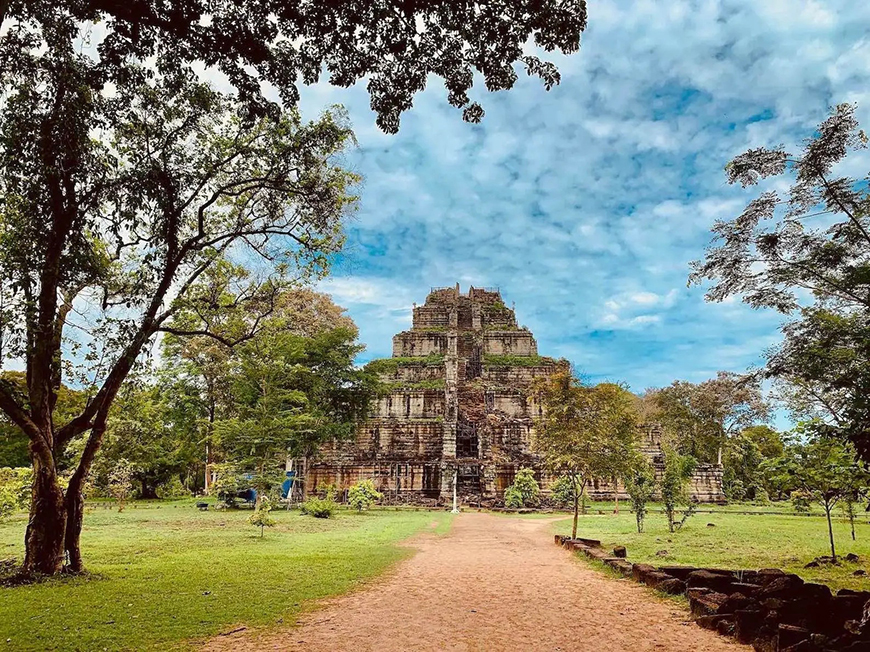 Prasat Thom: The Pyramid Temple at Koh Ker
Prasat Thom: The Pyramid Temple at Koh Ker
The ancient city of Koh Ker is a place steeped in history and spirituality. The two monumental lingams, present in the sanctuaries of Prasat Thom, are exceptional testimonies of Hindu art. These symbols of Shiva, of unusual size, remind us of the importance of this deity in Khmer culture. The Sanskrit inscription discovered at Prasat Thom provides further insight into the history of these lingams. The Naga balustrades, adorning the dams near the moats, are another example of the symbolic richness of Koh Ker. These mythical serpents, with five heads, are ubiquitous in Khmer architecture, where they represent strength and protection.
At the heart of Koh Ker stands the Prasat Thom, a seven-level pyramidal temple towering at 36 meters in height. Also known as Prang, this exceptional sanctuary, with its eastern courtyard and majestic moats, offers an unforgettable spectacle. Exploring its inner chambers, libraries, and central sanctuary is a true dive into history. Behind the sanctuary, 21 towers of various sizes testify to the architectural wealth of Koh Ker. The impressive moats, 47 meters wide, lined with trees and flanked by dams, add to the majesty of Prasat Thom. Although the original staircase leading to the top of the pyramid is inaccessible, a new staircase allows visitors to enjoy a breathtaking view of the surroundings.
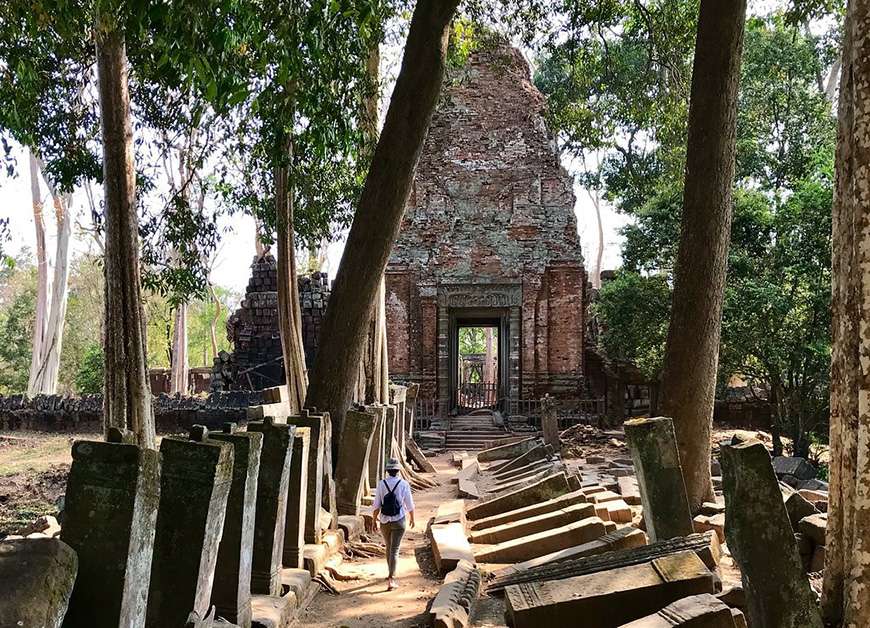 Prasat Krahom, the second-largest structure at Koh Ker
Prasat Krahom, the second-largest structure at Koh Ker
Beyond Prasat Thom, Koh Ker holds other treasures. The Prasat Krahom, an imposing tower of red bricks, leads to more secretive monuments. This relatively well-preserved structure testifies to the architectural wealth of the site. Behind Prang and Prasat Thom, a circular, artificial, and wooded hill attracts attention. Known as the White Elephant Tomb, this mysterious formation has sparked many hypotheses. Is it the foundations of a second pyramid or the tomb of King Jayavarman IV? The mystery remains...
At Koh Ker, each sanctuary tells a story. The Prasat Pram, with its complex architecture, is a place of contemplation. The Prasat Bak, once adorned with a statue of Ganesh, bears witness to the influence of Hinduism. The Prasat Chen, with its inscriptions, takes us to the heart of the religious life of Koh Ker. The Prasat Balang, with its massive lingam, is a place of rituals and devotion. Finally, the Prasat Damrei, the sanctuary of elephants, with its majestic sculptures, pays tribute to these sacred animals.
 Food & Drinks
Food & Drinks
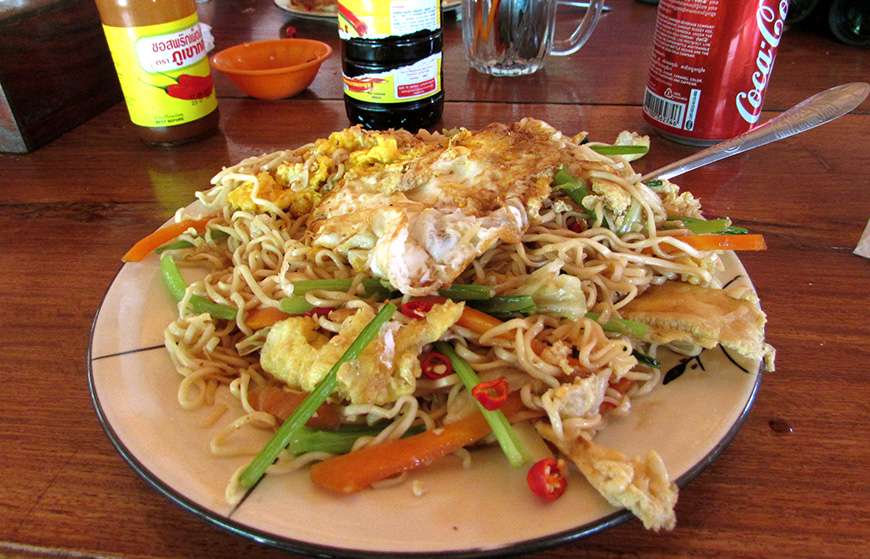 Mee Chha, the typical fried noodle dish
Mee Chha, the typical fried noodle dish
Near the parking area of Koh Ker, a few stalls offer typical Cambodian specialties, such as steaming noodle soups and various rice dishes. In this isolated region, dining options mainly consist of street stalls and small Khmer restaurants, offering local and authentic cuisine.
 Directions
Directions
Location
Koh Ker is located about 120 km northeast of Siem Reap.
How to get there
From Siem Reap: You can reach Koh Ker by taxi, motorbike, or bus. The journey takes about 2 to 3 hours.
From Phnom Penh: You can take a bus to Siem Reap, then follow the above directions.
Best season to visit
The best time to visit Koh Ker is from November to March, during the dry season. The temperatures are pleasant, and it does not rain.